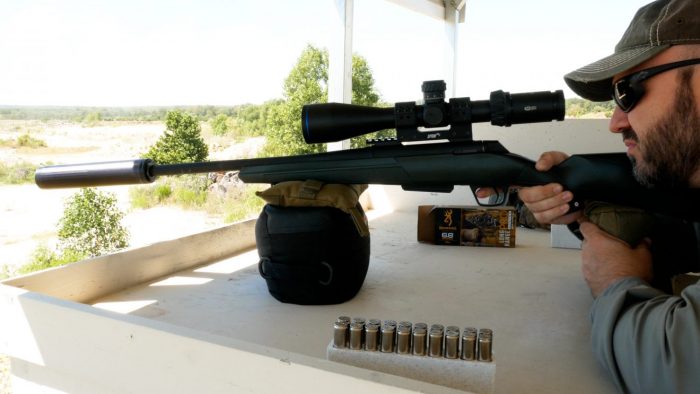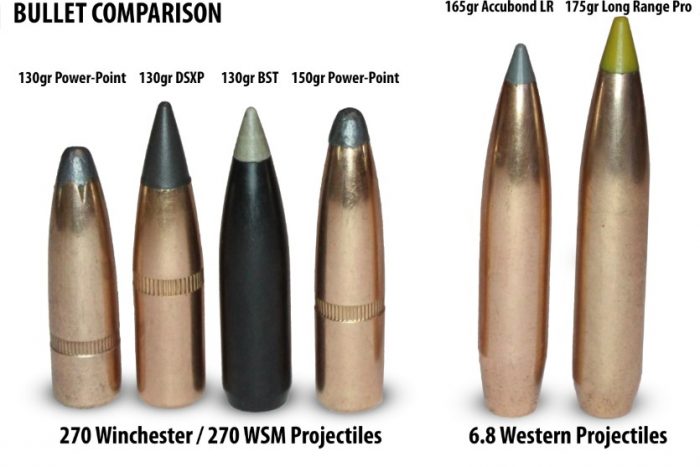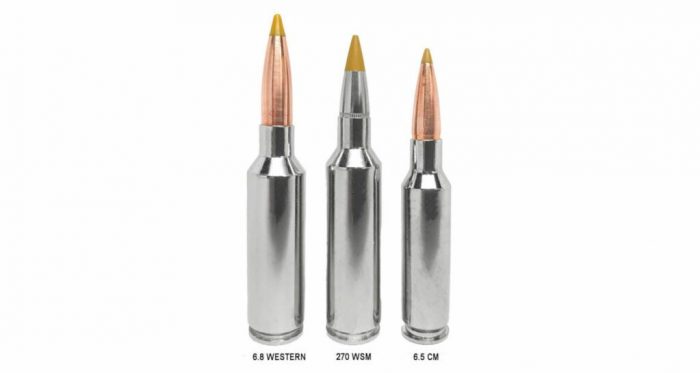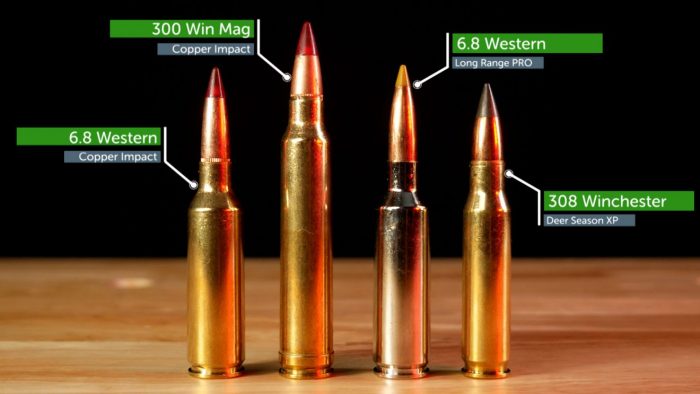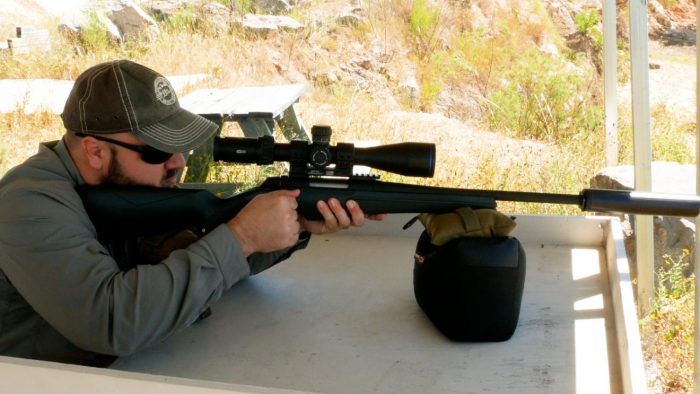6.8 Western Review: Winchester XPR VS Browning X-Bolt Hell’s Canyon Max Long Range
The new 6.8 Western from Winchester is the hottest new hunting caliber and is something special. From the first time I saw the specs of the bullet, I was excited to shoot it. The results are very impressive, and I could stop the review right there. However, I’m sure you want to learn more about the 6.8 Western so read on to discover why it’s my new favorite caliber.
First, let me start by saying that I’m not one to jump on the new caliber bandwagon. I subscribe to the philosophy that for hunting calibers, you should choose a bullet that you can walk into any gun store or retail store in the world and find. For that reason, my calibers of choice are 308 Win, 300 Win, and 375 H&H. All three of those calibers you can find just about anywhere you look. So, when the 6.8 Western was announced, I looked expecting to see a caliber that wasn’t much different than what is on the market currently. I was wrong.
Backstory
Since 2013, with the introduction of the 6.5 Creedmoor, there have been several calibers that have wanted to capitalize on the 6mm craze. These new cartridges were designed for low-drag bullets that are heavy and to push them faster than other cartridges on the market. They achieve this with high ballistic coefficients (BC) bullets, which are better at maintaining velocity and energy downrange as well as having less wind drift than lower BC bullets.
Having said all of that, the 6.8 Western takes this formula and puts it on steroids. It is a short-action magnum hunting cartridge that outperforms the 6.5 Creedmoor and the 6.5 PRC. How does it do this? By pushing a heavier grain bullet faster than the lighter grain bullets of the other cartridges. Keep in mind that the 6.8 Western was developed as a hunting caliber that performs well at long range, where the other calibers were designed as long-distance target cartridges and hunting cartridges second.
It’s easy to look at the 6.8 Western and confuse it with the parent case, the .270 WSM; however, they are different. The shoulder and neck have been shortened for the new heavy BC .277 caliber bullets. Additionally, the .270 WSM barrels are 1:10 twist, like the .270 Win, and the 6.8 Western barrels are the faster 1:8 twist to stabilize the heavier bullets.
Why Not .270 Win?
The 6.8 Western and the .270 Win both fire .277-inch bullets but the 6.8 Western can fire heavier bullets than the .270 Win. The 6.8 Western barrels have a twist rate of 1:8 whereas the .270 has a 1:10 twist rate. The .270 Win bullets top out around 150 grains where the 6.8 Western has a 175 grain Sierra Tipped Game King which we used in our testing. At 500 yards the .270 Win. has about 1,500 ft.-lbs. of energy, while the 6.8 Western has an additional 300 pounds of energy. Keeping in mind that the .270 Win is a long action and the 6.8 Western is a short action meaning faster chambering and reloading.
Now there’s something to be said for the availability of the .270 on most every gun store shelf, so don’t expect the .270 to go away anytime soon. There are plenty of manufacturers making the rifles and ammunition, something the 6.8 Western doesn’t have yet.
If you don’t already have a .270 Win, then the 6.8 Western does everything better in a short action.
Comparisons
Since the 6.8 Western is similar to several hunting cartridges on the market, let’s look at how it stacks up.
270 Win & 270 WSM
As I pointed out earlier, the 6.8 Western produces more energy downrange and can handle larger grain higher BC bullets with its faster twist rate, all of this within a short action. The 6.8 Western has 10 percent less propellant but has 12 percent more energy at 500 yards than the 270 WSM. This equates to less muzzle blast.
30 calibers
The 6.8 Western is designed to bridge the gap between the 30 cartridges such as 300 Win Mag, 300 WSM, 300 PRC, and 30 Nosler and the 6.5 cartridges. The 6.8 Western produces more energy at 500 yards than the 180gr 300 Win Mag with less recoil and in a short action. The recoil is less than just about all 30 calibers.
The advantage that legacy 30-caliber cartridges have is availability and the ability to shoot even higher grain bullets. However, if you are looking for that heavy bullet, the 6.8 Western probably isn’t for you.
7mm
The 7mm offers bullets with high BC that are close to the 6.8 Western. The 7mm WSM is probably the closest to the 6.8 Western regarding trajectory and energy downrange. However, it still can’t shoot as heavy of bullets as the 6.8 Western. Also, keep in mind the actual diameter of the 6.8 Western is .277 vs. .284 of the 7mm, less than a 3 percent difference in size.
6.5 Creedmoor
As I said in the video, the 6.8 Western is a Creedmoor killer. Winchester says the 6.8 Western has 16 percent more energy than the 6.5 PRC at 500 yards and 67 percent more energy than the 6.5 Creedmoor. The 6.8 Western has 1 inch less wind drift than the 6.5 Creedmoor at 500 yards and 7 inches less at 1000 yards.
Now that the technical data is out of the way, you can see why I was excited about this new caliber. I primarily use my rifles for hunting applications. Although I do enjoy long-range shooting, if there isn’t a hunting aspect, I’m not as enthralled as I once was. So, for the review, we contacted Winchester Ammunition for two different types of ammo. The Browning 175gr Long Range Pro Hunter with the Sierra tipped GameKing and the Winchester 162gr Copper Impact. Both are designed as hunting bullets, and I’ve had good luck with the Copper Impact in 308 on deer.
With the ammo in hand, we contacted Browning. Winchester Ammunition is a separate company from the Winchester rifles, which are made by Browning, for two different rifles. I wanted to test the performance of a long barrel rifle and a short barrel, so we received a Winchester XPR Stealth SR and the Browning X-Bolt Hell’s Canyon Max Long Range. These rifles are new for 2021 and are at opposite ends of the spectrum, but they are still hunting rifles.
The Winchester XPR Stealth SR, the SR stands for suppressor-ready, has a 16.5″ barrel and weighs 6 pounds, 8 ounces, with an overall length of 36.5 inches. The Browning X-Bolt Hell’s Canyon Max Long Range has a 26-inch barrel, weighs 8 pounds 3 ounces, and has an overall length of 46 inches. Both rifles have 3-round magazines and adjustable triggers. There’s an $890 difference in price between the XPR and X-Bolt, with the XPR being $669.99 and the X-Bolt coming in at $1,559.99.
Looking at the two rifles, it’s clear to see why the X-Bolt is more expensive. It features a heavy sporter contour barrel, Cerakote Burnt Bronze finish, removable Recoil Hawg muzzle brake, extended bolt handle, Max stock in A-TACS AU Camo finish with adjustable comb and LOP spacers. The Hell’s Canyon Max Long Range is near the top of the models offered in the X-Bolt. It doesn’t, however, come with a Picatinny rail; however, Talley makes a nice one that matches the finish of the Hell’s Canyon.
By contrast, the Winchester XPR is a no-frills blue-collar rifle with a sub $700 price tag. Its competition would be rifles like the Ruger American and the Remington Model 7. It features a composite stock in an attractive green that doesn’t feel cheap. Between the two rifles mentioned earlier, I’d place the Winchester above the Ruger and slightly below the Remington regarding fit and finish. The XPR Stealth SR has a nickel Teflon coating on the bolt, a threaded barrel with a 5/8×24 thread pitch, and includes a Talley Picatinny rail. Honestly, I was surprised to find a Picatinny rail included with the Winchester but not with the Browning.
Both rifles performed exceptionally well in testing and had groups under 1 inch. Since shooting the video, I’ve had more trigger time with both guns and enjoy them both equally for different reasons. The XPR is short and light, which makes it great for mountain hunting or in hunting blinds. I could get a half-inch group with the 175gr Browning Long Range Pro-Hunter bullets in the XPR, and those will be the ones that I hunt with this season. The X-Bolt, with its longer and heavier barrel, is more accurate than the XPR but marginally. I can see it being great for prairie dog hunting or elk hunting, although it does weigh more than the XPR.
Every rifle has minor things that you need to be aware of. For the XPR, I found that if you fire it quickly, a box of 20 rounds in 10 minutes, then the bolt tends to seize up. Once the gun cools down a bit, it functions normally. I found that since the recoil is mild, especially with a silencer, I found myself shooting it faster than I would my 300 Win Mag. On the X-Bolt, I had some issues with ejection, which turned out to be the scope mount I was using. I’d recommend using rings that aren’t over the ejection port and when mounting your rings, keep them clear of the ejection port.
Which rifle would you choose if you could only get one? That’s a tricky question and depends on the style of hunting or shooting that you do. I’d say if you intend to spend a lot of time at the range, then you’ll want to go with the Browning X-Bolt Hell’s Canyon Max Long Range since the barrel is slower to heat up and cools down faster. Also, if you want the max velocity out of the 6.8 Western, then the longer barrel is the obvious choice. My preference is the Winchester XPR Stealth SR. I prefer short and handy rifles over max performance from a given caliber. The XPR has plenty of punch for elk hunting and is an excellent package for whitetail deer.
Overall, I’m now a big fan and proponent of the 6.8 Western. It does just about everything that my 300 Win Mag can do but out of short action. Recoil is less, and accuracy is phenomenal even with a sub $700 rack gun. I expect great things from the 6.8 Western in the future, and I’m looking forward to seeing new rifles and loads developed. To that end, I’ve even bought a set of dies to start reloading my own 6.8 Western loads. Even if you already have a 270 WSM, 300 Win mag, or a 6.5 Creedmoor, the 6.8 Western should be on your list.
Jeremy Mallette is co-founder of International Sportsman. An avid hunter and outdoorsman, he has spent more than a decade in the outdoor industry, from hiking and camping to silencers and hunting. His father taught him to shoot at age six, and he received his first firearm at age eight — a 1942 Colt Commando .38 special revolver. He enjoys yearly trips to Kansas for pheasant hunting, spending time with his children at the deer lease, and collecting unique firearms.

